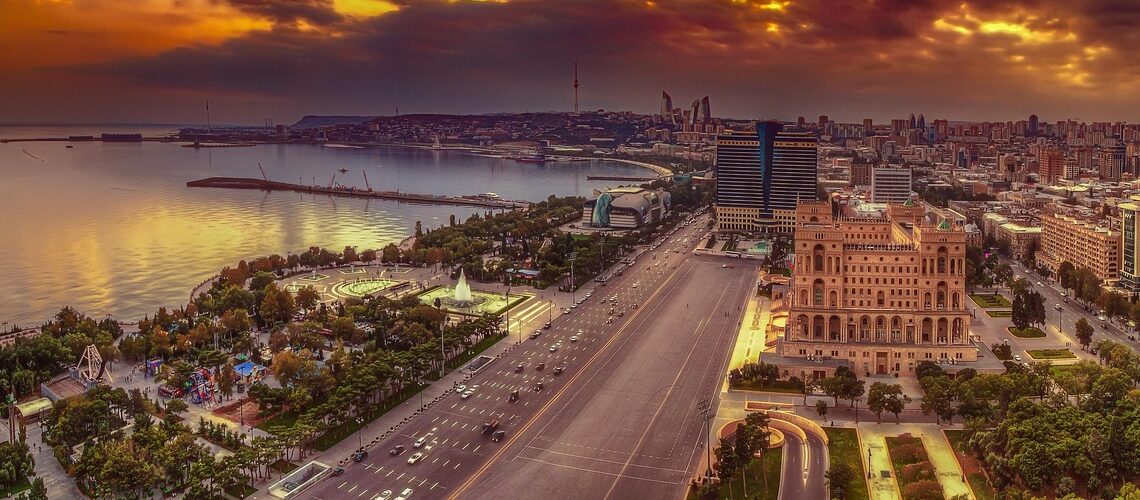The transformation of the Azerbaijani economy in recent decades represents a compelling case study in economic development, driven by strategic resource management, geopolitical positioning, and diversifying the economic base. Following independence from the Soviet Union in 1991, Azerbaijan faced considerable challenges, including political instability and economic turmoil. However, by leveraging its vast natural resource wealth, particularly in oil and gas, the country has orchestrated a remarkable economic resurgence. This essay delineates the trajectory of the Azerbaijani economy, highlighting key factors that have contributed to its growth.
To understand this transformation, it is essential to examine Azerbaijan’s natural resources, particularly its hydrocarbon reserves. According to the State Statistical Committee of Azerbaijan, the country boasts proven oil reserves estimated at around 7 billion barrels and natural gas reserves of approximately 2.6 trillion cubic meters. These resources have been a cornerstone of economic growth, facilitating an influx of foreign direct investment (FDI) and significantly boosting state revenue. The signing of the “Contract of the Century” in 1994, which involved several international oil companies in the exploration and production of Azerbaijan’s oil fields, marked the beginning of substantial foreign involvement in the sector.
The economic indicators from the subsequent decades underscore the impact of this diversification. For instance, Azerbaijan’s GDP grew from approximately $7 billion in 1995 to over $48 billion in 2022, reflecting an annual growth rate that consistently outstripped the regional average. Notably, oil revenues accounted for about 70% of total exports, underscoring the dominance of the hydrocarbon sector. However, the government recognized the risk of over-reliance on oil and gas, prompting initiatives aimed at diversifying the economy.
In recent years, the Azerbaijani government has undertaken significant reforms to foster non-oil sectors, including agriculture, tourism, and information technology. The “Strategic Roadmaps” initiative introduced in 2016 outlines a comprehensive framework for economic diversification and aims to reduce the economy’s dependency on oil revenues by encouraging industrial innovation and enhancing productivity. The agricultural sector, for example, has shown promise; in 2021, it comprised nearly 6.6% of GDP and employed approximately 30% of the workforce. The government has actively encouraged agricultural development programs that leverage Azerbaijan’s diverse climate conditions and fertile lands.
Moreover, tourism has emerged as a vital sector within this framework. The capital city, Baku, with its unique blend of modern architecture and historical heritage, has seen an influx of international tourists. Statistics from the State Agency for Tourism indicate that the number of foreign visitors rose by 80% from 2015 to 2019, contributing to a growing service sector that now accounts for nearly 60% of GDP. This growth was bolstered by the hosting of major international events, such as the Eurovision Song Contest in 2012 and the Formula 1 Grand Prix starting in 2016.
Investment in infrastructure has also played a crucial role in the rise of the Azerbaijani economy. The establishment of the Southern Gas Corridor, designed to transport natural gas to Europe, exemplifies the strategic infrastructure projects aimed at enhancing connectivity and economic ties. This $40 billion project, which includes several pipelines connecting the Caspian Sea to European markets, is expected to play an integral role in meeting Europe’s energy demands while ensuring Azerbaijan’s status as a key player in global energy markets.
Despite these advancements, challenges remain that threaten the sustainability of Azerbaijan’s economic growth. The global shift towards renewable energy, rising geopolitical tensions, and regional conflicts could undermine the revenue generated from fossil fuels. Furthermore, endemic corruption and governance issues, while improved under recent administrations, continue to necessitate further reform. The reliance on oil revenues could inhibit long-term growth if alternative industries are not adequately developed.
In conclusion, the rise of the Azerbaijani economy has been characterized by an impressive recovery from post-Soviet socioeconomic challenges, driven largely by its energy sector. The strategic initiatives aimed at diversifying the economic base have shown promising results, suggesting a potential pathway towards a more resilient and balanced economy. As Azerbaijan navigates the complexities of the global economic landscape, the lessons learned from its development trajectory will undoubtedly resonate beyond its borders, offering insights into the dynamics of resource-dependent economies transitioning toward a diversified future. The stakes are high, yet the potential for sustained growth remains firmly within reach.

